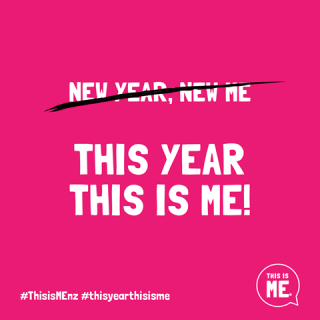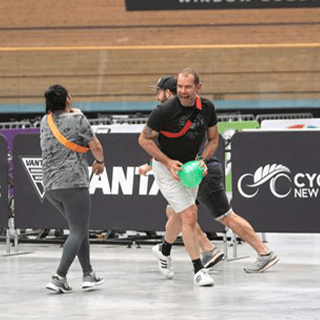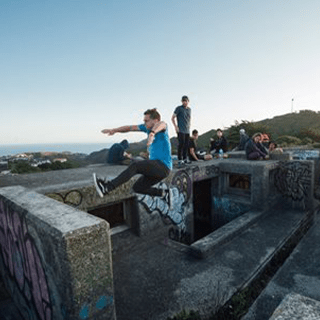Creating an Equal Playing Field
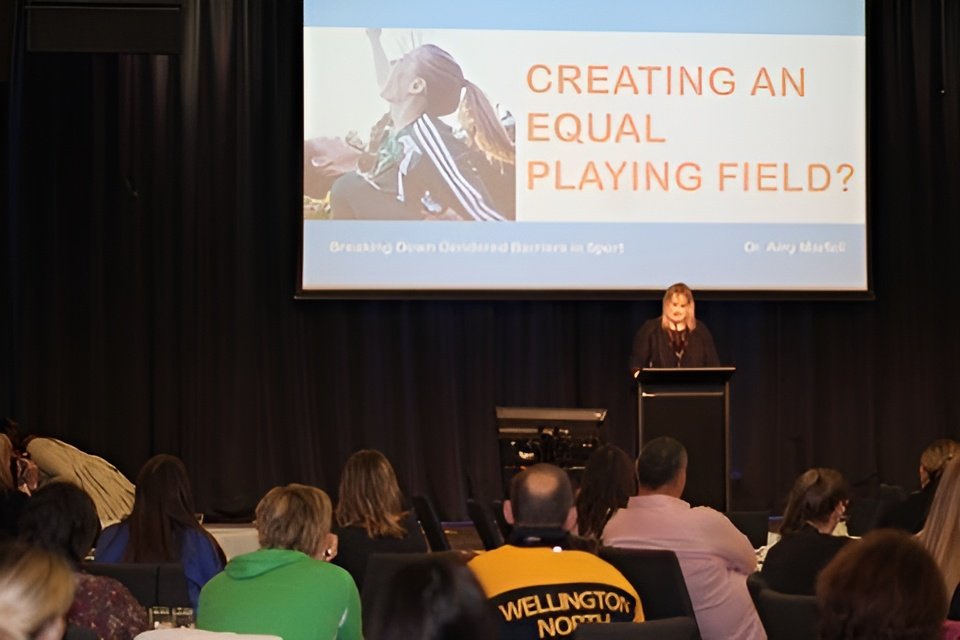
Thanks to three history-making women’s World Cups, we’ve had the absolute luxury of saturation when it comes to women’s sport – it’s been everywhere: on our screens, in our newspapers, on our social media, and most importantly in our hearts. We’ve embraced it, celebrated it, revelled in it, and now we need to do something long term about it! It’s our duty not to waste the opportunities these World Cups and the spectacles of women’s sport we’ve been afforded have given us!
I’d like you to think back to your experience of any of these World Cups – it could be the sold-out Hagley Park final between Australia and England in the Women’s Cricket World Cup, the moment reserve lock Ngan-Woo intercepted England’s lineout throw and the Black Ferns secured the World Cup when it looked certain England would score to tip the game, Ruby Tui and the Eden Park crowd’s rousing rendition of Tutira Mai, or the jubilation of the moment the Football Ferns won their opening match versus Norway, against all expectations. I wouldn’t mind betting you can feel it - the moment, the sensation, the excitement of it all. And so you should; after all, this is the power of sport.
Now I want you to put yourself in the shoes of a young girl, utterly inspired and elated by what they’ve just seen, a young woman thinking she too can do those things, fill a stadium one day, represent her province, her family, her community with pride and play like the heroines she’s just observed. A young woman who eagerly heads down to their local club to join a local team and get involved. Now imagine how that same young woman feels when they walk into a concrete, communal shower block, sees their all-male coaching and support crew, or receives kit from last year’s men’s team that’s either five sizes too big or too small.
Indeed, while these World Cup events have been fantastic for showcasing elite women’s sport and shining the spotlight on the fact that women can indeed play sport in exciting and enthralling fashion, it is important to realise that they’re so much more powerful than just this. What they have the power to do is to create an absolute groundswell of interest in community sport and recreation participation – a flooding of clubs, locker rooms and facilities with eager people wanting to engage.
But the real question is – are we as providers truly prepared for this? Have we readied ourselves to be the answer to the inevitable increase in appetite for quality participation in sport, in these sports? In other words, have we created a legacy of inclusion, whereby appetite can be turned into participation without hesitation? Or rather than legacy, do we have an issue of what I term, ‘lag-acy’ – all the positive intent in the world to capture this important audience and to do better when it comes to gender equity, but a gap in the ability to provide a quality and captivating experience?
We should think of legacy not as just what happens by some stroke of luck, emerging from the groundswell of interest in sport as a result of these mega events and the platform laid by powerful female athletes doing themselves, their families and our country proud, but rather what we deliberately leave behind to create a long-lasting impact – legacy is a deliberate act, it’s what we choose, what we define, it’s what we do. If you can see it, unfortunately, the system doesn’t always enable you to be it, or at least to feel good on or about the journey to get there, wherever there is….
So, what if these World Cups had the ability to be the catalyst for change – not just in participation rates, but in the ways we deliver and experience sport, regardless of gender? It is for these very reasons that it’s so important we keep the conversation about creating an equal and equitable playing field alive post our recent World Cup fixtures – because, the appetite and intent is there from the participants, but are the systems there to support them?
Everyone should have by now seen the images of equality versus equity or heard the analogies of giving people with different abilities and needs the same bike and expecting them to experience the same ride. But I wonder, if by now, we truly understand our role in creating equity for participants in sport and recreation?
We need both equality and equity in order to ensure fairness and justice and to allow every member of society to achieve their fullest potential.
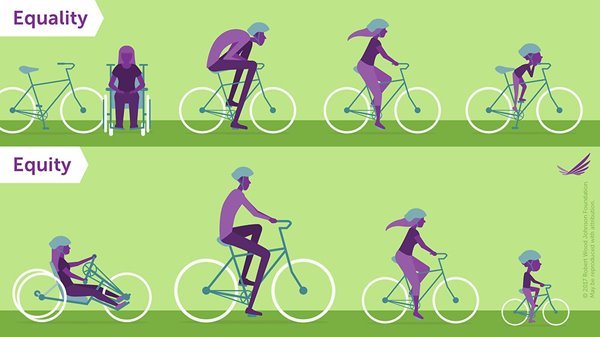
Equality ensures that everyone is given the same opportunities, it is the assumption that everyone starts at the same place and therefore, benefits from the same resources, supports and opportunities, while an equitable approach recognises that everyone doesn't begin in the same place in society and strives to give everyone what they need in order to have equal access and to enjoy those opportunities.
Equity means catering to individual need. In an equality model, a coach gives all of their players the exact same shoes. In an equity model, the coach gives all of their players shoes that are their size.
But, what could this look like? How do we create equal and equitable playing fields?
It’s often the simple things that can truly make some of the biggest differences to whether or not something feels equitable in community sport and active recreation – things like:
-
Facilities – an equitable approach recognises the socio-cultural challenges women face when it comes to changing rooms and a desire for privacy, the social pressures around body image and the pressure to look a certain way – clean, well put together etc. It recognises the different needs and preferences that women have for cleanliness, equity recognises the simple but important need for sanitary bins in toilet cubicles, or for change tables in both men’s and women’s bathrooms because childcare is a shared challenge and privilege between both sets of parents. Equity recognises the need for bathrooms that cater to those who identify as gender diverse and provides options for these spaces, without question.
-
Clothing – an equitable approach recognises that men’s sizes won’t work for women, they won’t accommodate their breasts, hips and thighs, they’ll cling in all the wrong places or be so big that women will trip over their own shirts. An equitable approach will provide women with the clothing that fits THEIR bodies, not the bodies of their male counterparts – no hand-me-downs from last year’s men’s team, no ordering from the same catalogue. Importantly, an equitable approach will give the participant a say in what size and even style they wear, no matter their gender identity. An equitable approach provides freedom and flexibility for the expression of multiple gender identities. It allows for the fact that women don’t want to play sport in white shorts.
-
Support systems – are important. Those who facilitate and support us through our participation in sport and active recreation can have some of the biggest impacts on our lives. Take coaches for example, coaches are the most visible and influential leaders in sport. They shape the day-to-day lived experiences of participants and influence the growth and development of sport. While women’s participation in sport is steadily growing, the number of females coaching is not keeping up with the pace – and this is true at both community and elite levels. One hundred percent of male athletes have had a male coaching role model during their athletic careers, to their benefit; young women likewise need and deserve more same sex role models. For women in particular, women coaches and leaders matter - when there are enough women decision-makers, women’s issues get prioritized. This is why pivotal positions of leadership, like coaching, in sport for women are so important. It’s not enough to simply have a female team manager responsible for the pastoral care of the players. Placing a female coach within the environment changes the game – she becomes part of the leadership of the team, a voice for the players and a beacon of hope that issues important in the lives of women will be discussed at decision-making tables.
-
Enabling the managing of multiple identities – e.g., that of Mum and Dad – equity looks like taking into account the roles and responsibilities of your participants. Acknowledging that offering an opportunity that begins bang on 5’clock for someone who works and has to travel from their workplace to your activity, or at 6pm for a Mum who needs to get children fed and bathed can make all the difference as to whether or not someone can accommodate you and your sport into their life. Equally, providing space for people to not need to check their identity at the door can also make a more equitable offering. Take for example, providing a room for children to play under supervision in your clubrooms while their parents train, or running concurrent senior and junior sessions for parents AND their children. The best activities take into account the multiple identities that people assume and help them to balance their need and desire for activity with their roles as employee, Mum, Dad, partner or other. While this has been accommodated much better at elite levels over recent times, arguably, we can often do better at the community level.
While they might seem small, these things can all make or break an experience for a community sport and recreation participant. So how will you make your sport, recreation and physical activity opportunities available to all communities so that everyone has access to the positive aspects of movement, like making new friends, feeling part of a team, feeling pride in trying hard, and feeling strong and capable? Because equity in participation is much bigger than just sport – it’s about advocating for full participation in life opportunities for all. It’s about ensuring everyone has a pair of shoes that fit, always!
